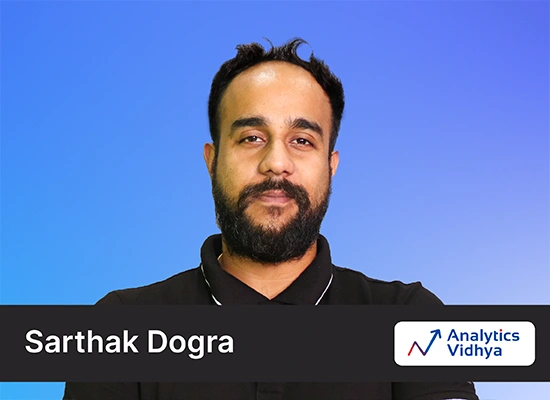During the early access phase of xAI’s Grok-3, AI enthusiasts, developers, and researchers have wasted no time pushing its limits and exploring its capabilities. From game development to reasoning tests, the first impressions suggest that Grok-3 is a serious contender in the AI space, rivalling OpenAI’s top-tier models, DeepSeek-R1, and Google’s Gemini.

But what makes Grok different from other AI models? And why is it gaining so much attention?
Table of contents
Grok: xAI’s Vision for an Open, Unrestricted AI
Grok is an advanced AI model developed by xAI, the artificial intelligence company founded by Elon Musk. Unlike many mainstream language models, Grok is designed to be less restricted and more open in its responses compared to ChatGPT (OpenAI) or Claude (Anthropic). It aims to provide an unbiased, truth-seeking AI experience, making it one of the most powerful and distinctive large language models (LLMs) available today.
With the release of Grok-3, this vision is now becoming a reality.
The Origins of Grok: From OpenAI to xAI
To understand why Grok exists, we have to look back at the early days of OpenAI. Few people realize that OpenAI was initially shaped by Elon Musk, who was one of its co-founders alongside Sam Altman, Greg Brockman, and others.
- Musk was the primary investor in OpenAI’s early research, funding its development and advocating for an open-source, nonprofit approach.
- However, as OpenAI transitioned into a for-profit, closed-source company, Musk disagreed with this shift and parted ways with the organization.
- This left a gap in AI research—one that Musk found frustrating, given his belief that AI is one of the five key technologies that will define humanity’s future.
Musk’s Comeback: The Birth of xAI & Grok
After witnessing the explosive success of ChatGPT, Musk knew he had to act. In March 2023, he officially launched xAI, marking his reentry into AI development.
- In 2024, xAI made history by building the world’s largest AI supercomputer in just 19 days—a feat so remarkable that NVIDIA’s CEO, Jensen Huang, called it “superhuman.”
- xAI didn’t stop there; they are now expanding their computing power to 200,000 GPUs, ensuring they stay ahead in AI infrastructure.
With these incredible breakthroughs, now Grok-3 is emerging as one of the most powerful AI models ever created.
The Core Promise of Grok: An AI Without Bias
Many existing AI models—such as ChatGPT and Claude—are often criticized for being “woke” or overly politically correct. Some argue that their built-in biases can lead to dangerous or misleading conclusions.
Elon Musk’s vision for Grok is different.
- He envisions a “truth-seeking” AI, one that delivers objective facts without filtering or softening information to fit social or political narratives.
- Whether the truth is uncomfortable or controversial, Grok is designed to pursue it—unlike its competitors, which reflect the values of Silicon Valley companies.
This unfiltered, reality-based approach could set Grok apart as a game-changer in AI ethics and information dissemination.
Let’s see what the experts say:
Grok-3 Performance: Game Development on the Fly
“I just told it what I wanted, and it built the game.”
One of the most eye-opening early use cases comes from Penny2x, who built an entire game from scratch using only Grok-3 within hours of getting access.
“This game was 100% created by GROK. I just told it what I wanted and put the code in the right place. I keep asking for adjustments, and it keeps spitting the game out in a single file that I can run.”
This is huge for developers. AI-generated game code isn’t new, but the fact that Grok-3 does this so seamlessly, without API integration, and feels on par with models like GPT-4o and Sonet is remarkable. If Grok-3 can integrate better into developer workflows, it could change how indie devs and studios create games.
My Take
This is an exciting milestone. Grok-3’s real-time adjustments and ability to generate runnable game code could mean faster prototyping for developers. If xAI optimizes its API for production use, we could see a major shift in AI-assisted game development.
Grok-3 Performance: Reasoning & Problem-Solving: A True “Thinking” AI?
Andrej Karpathy’s “Vibe Check”: Can Grok-3 Think?
AI pioneer Andrej Karpathy put Grok-3 to the test with complex reasoning and problem-solving tasks. His biggest takeaway? Grok-3’s “Think” mode is a game-changer.
“Grok 3 clearly has an around state-of-the-art thinking model (“Think” button), and did great out of the box on my Settler’s of Catan question. Few models get this right reliably. The top OpenAI models (o1-pro, $200/month) do, but DeepSeek-R1, Gemini 2.0 Flash Thinking, and Claude do not.”
He also tested logic puzzles, tic-tac-toe board generation, and mathematical estimations (like calculating GPT-2’s training flops). In tasks requiring deep reasoning, Grok-3 outperformed GPT-4o and o1-pro, which failed the estimation task even with their own reasoning features.
“The impression I got is that Grok-3 is somewhere around o1-pro capability and ahead of DeepSeek-R1.”
However, Grok-3 is not perfect. It struggled with some puzzle-generation tasks, emoji encoding challenges, and still has occasional hallucinations in information retrieval.
My Take
The “Think” mode appears to be one of Grok-3’s biggest strengths. In an era where most chatbots struggle with real-time problem-solving, Grok-3’s ability to logically “work through” complex queries (rather than just regurgitate answers) puts it ahead of many competitors. However, as Karpathy notes, real benchmarks and evaluations will tell the full story.
Also Read: Andrej Karpathy’s First Look at Grok 3!
Grok-3 vs. Other AI Models: How Does It Stack Up?
Beyond just reasoning, Grok-3 was tested against leading models on knowledge retrieval, deep search, humor, and ethical decision-making.
Deep Search: AI for Research & Real-World Queries
Karpathy noted that Grok-3’s “Deep Search” feature is comparable to OpenAI’s Deep Research and Perplexity’s search models, performing well on real-time queries like:
- “What’s up with the upcoming Apple Launch?”
- “Why is Palantir stock surging?”
- “Where was White Lotus Season 3 filmed?”
However, it showed some weaknesses, like hallucinating URLs, avoiding X (Twitter) as a source, and missing citations for certain claims.
Mathematical & Logic Reasoning
Grok-3 successfully tackled:
✅ Estimating GPT-2’s training FLOPs (which GPT-4o & o1-pro failed!)
✅ Solving tic-tac-toe puzzles (which many SOTA models struggle with!)
✅ Attempting to solve the Riemann Hypothesis, rather than outright giving up (unlike Gemini & Claude!)
However, it still made errors in:
❌ Tricky board game generation (failed complex tic-tac-toe setups!)
❌ Emoji encoding mystery puzzle (DeepSeek-R1 did better!)
❌ Understanding humor (Jokes feel generic, lacking wit!)
My Take
Grok-3 appears to be on par with OpenAI’s best models (o1-pro, $200/month) while outpacing Gemini and DeepSeek-R1 in certain reasoning tasks. However, it still needs refinement in humor, real-time research accuracy, and puzzle generation.
Grok-3 Performance: Real-World Physics Simulations
AI researcher Yuchen Jin tested Grok-3 on physics-based coding challenges and was impressed.
“Grok 3 might be the best base LLM for real-world physics! Prompt: ‘Write a Python script of a ball bouncing inside a spinning tesseract.’ No ‘Thinking’ mode enabled, just the base model. I’m very interested in trying their reasoning models.”
My Take
If Grok-3 can handle physics simulations effectively, this could be a huge win for researchers, engineers, and developers in simulation-heavy fields.
Is Grok-3 Woke?
This raises an interesting discussion about AI bias in visual models. While Grok-3 appears highly advanced, AI models still struggle with nuanced identity representations. This isn’t unique to Grok—many AI systems, including MidJourney, DALL·E, and Stable Diffusion, face similar challenges in unbiased representation.
Final Verdict: Is Grok-3 a True AI Contender?
Strengths
✅ State-of-the-art reasoning (“Think” mode competes with OpenAI’s best)
✅ Excels in logic puzzles, deep search, and real-time research
✅ Game development with AI is now smoother and faster
✅ Physics-based coding shows promising results
Weaknesses
❌ Still hallucinates information & generates fake URLs
❌ Struggles with humor & creativity in joke generation
❌ Puzzle and board game generation needs work
Grok-3 is also the first-ever model to surpass a score of 1400, setting a new benchmark for large language models (LLMs). However, currently, it is not showing Grok-3 in the Chabot Arena – web version!

Also read: Grok-3 (codename “chocolate”) is now #1 in Chatbot Arena
Conclusion
Grok-3’s performance is undeniably impressive. In just one year, xAI has built a model that competes with OpenAI’s strongest LLMs and outperforms DeepSeek-R1 and Gemini in reasoning.
However, it’s not perfect. While the “Thinking” mode enhances reasoning, there’s still room for improvement in fact-checking, humor, and complex creative tasks.
With refinements in deep search, developer integration, and real-world reasoning, Grok-3 has the potential to be a groundbreaking AI that challenges OpenAI and Google at the top. Grok-3 is officially in the game. Now, let’s see how it evolves.
Let me know your thoughts on Grok-3 in the comment section below!
Unlock the future with xAI Grok 3: The Smartest AI on Earth! Dive into game development, advanced reasoning, and real-world tasks. Enroll now and master AI innovation!”





